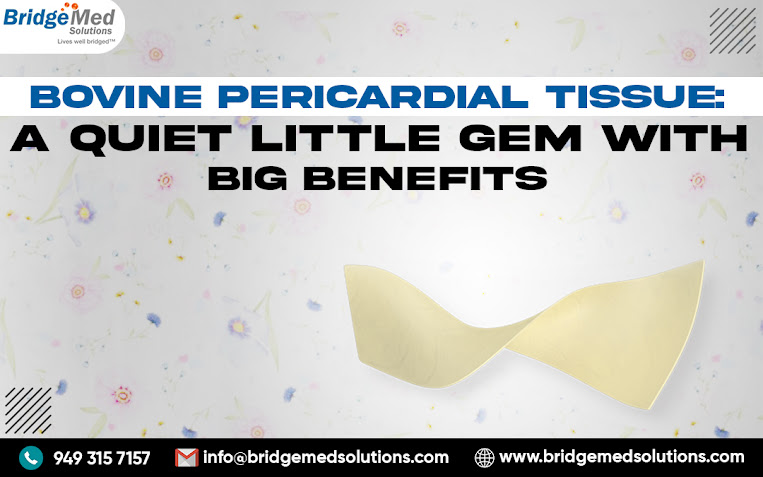Bovine Pericardial Tissue: A Quiet Little Gem With Big Benefits
Bovine pericardial tissue is a
type of pericardium that is taken from the heart of a cow. It is used for wound
healing, treating heart disease, and treatment of cancer. It is a type of natural
tissue that is harvested in a very gentle way and is often used in the
treatment of burn injuries.
The tissue is taken from the
heart of the animal and is then cleaned and dried before being used. It is a natural
with zero side effects. Bovine Pericardial Tissue
is mostly used in the
treatment of heart failure, heart attacks, and stroke.
Ø What is a tissue patch?
A
tissue patch is a thin, flexible, thin, plastic film that is applied to the
outside of the heart valve to help keep it open. A tissue patch is a temporary
measure that is applied to the outside of the heart valve to help keep it open.
It is usually used for a brief period, usually a few hours to a day or two.
Once the patch is no longer needed, it is removed and discarded.
A tissue patch is an
adhesive patch that is placed on the surface of the heart. These patches are
typically placed on the heart when heart valves are replaced. This patch
attaches to the top of the heart valve, stopping blood from seeping through the
valve. The patch is removed once the heart valve is healthy and functioning.
Ø Benefits of tissue patch:
A tissue
patch is a medical device that is placed on the heart valve to add tissue to
the area. This is done to help increase the size of the valve, which in turn
helps people with mitral valve stenosis, a condition that is often caused by
valve calcification.
The tissue patch is usually
placed by a physician and is a temporary solution to the problem. Bovine pericardial tissue is mostly
used for tissue patch for heart valve.
If you are
experiencing chest pain, a tissue patch can be placed on the heart valve to
relieve the pain.
Ø How
tissue patch on the heart is done:
Tissue patching is a procedure
used to repair a damaged heart valve. It is a minimally invasive procedure that
can be done without open-heart surgery. The patching procedure involves:
·
Replacing a damaged valve with a
tissue patch that is connected to the patient’s existing valve.
·
This patch is then connected to a
surgeon’s instrument to allow the valve to be tightened and opened.
·
During the operation, the
patient’s existing heart valve is removed and replaced with a tissue patch. The
tissue patch is then connected to the existing valve to make sure that the valve
can open and close properly.
·
The patient’s existing valve is
monitored during the procedure and any problems can be adjusted during the
operation.
Once the procedure is complete,
the patient’s new valve should function just like a healthy valve. It will open
and close normally, allowing the patient to have normal blood flow. The patch
also helps to reduce the risk of further damage to the heart. The patient
should be able to return to normal activities soon after the procedure.

Comments
Post a Comment